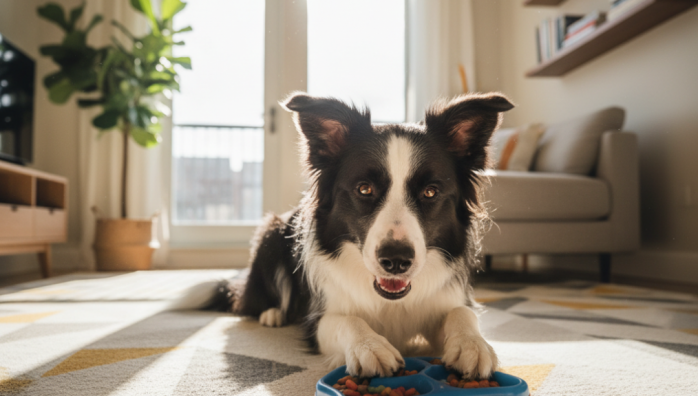Daily Exercise Routines for Apartment Dogs
by admin in Pet Care Basics 16 - Last Update November 25, 2025

When I first brought home my tireless Border Collie mix, I remember looking around my 700-square-foot apartment and feeling a wave of panic. How was I going to keep this whirlwind of fur happy and well-exercised without a yard? It felt impossible. But over the years, I\'ve learned that it\'s not about the size of your space, but the quality and consistency of the engagement you provide. It took trial and error, but I’ve since developed a daily routine that keeps my high-energy companion calm, content, and tired in all the right ways.
Understanding that physical exercise isn\'t enough
My biggest \'aha\' moment was realizing that an hour of frantic running at the dog park often left my dog more hyped-up than tired. I was building her physical stamina, but completely ignoring her brilliant mind. High-energy breeds, especially intelligent ones like herders and retrievers, crave mental challenges just as much as physical ones. When I started focusing on \'brain games,\' everything changed.
The magic of indoor \'nose work\'
One of the easiest and most effective ways I found to burn mental energy is through scent games. I started simple. I\'d have my dog sit and stay while I hid a high-value treat in the room. Then I\'d release her with a \'Find it!\' command. Watching her intently sniff out the reward was incredible. It\'s a low-impact activity that taps directly into their natural instincts, and after just 15 minutes of this, she\'s often more relaxed than after a 30-minute walk.
Puzzle toys are a lifesaver
I honestly don\'t know what I\'d do without our collection of food puzzles and lick mats. These became a core part of our feeding routine. Instead of just plopping her food in a bowl, I make her work for it. This simple switch turns mealtime into a 20-minute problem-solving session. It prevents boredom, slows down her eating, and gives me a crucial window of peace and quiet.
Structuring the perfect indoor and outdoor mix
The key for us is a balanced routine that blends focused indoor activity with essential outdoor time. It\'s not about replacing walks, but supplementing them to meet a high-energy dog\'s needs.
- Morning (7 AM): We start the day with a brisk 45-minute walk or jog. This isn\'t just a potty break; it\'s a \'sniffari\' where she gets to explore and process the world. This is crucial for her mental wellbeing.
- Mid-Morning (10 AM): After she\'s rested, we do a 15-minute indoor training session. We\'ll practice commands, learn a new trick, or play a game of \'find it\'. This really engages her brain.
- Afternoon (2 PM): This is when I use a puzzle feeder for a midday snack. It’s a great way to break up the day and prevent restlessness while I\'m working.
- Evening (6 PM): This is our main play session. We\'ll do 20-30 minutes of indoor fetch with a soft ball or a controlled game of tug-of-war. This helps burn off any pent-up energy from the day.
- Night (9 PM): Our final outing is a calm 20-minute decompression walk. No running, no intense commands—just slow sniffing to help her wind down before bed.
A final thought on the \'off switch\'
Perhaps the most important part of our routine was teaching an \'off switch.\' A high-energy dog needs to learn how to settle and relax in a small space. We worked extensively on a \'place\' command, rewarding her for calmly lying on her bed. This taught her that the apartment is a place for rest, not a racetrack. Remember, this is what worked for my dog and me, but every dog is an individual. I always recommend chatting with your vet or a certified trainer to create a plan that\'s perfect for your pup\'s specific needs and health.













